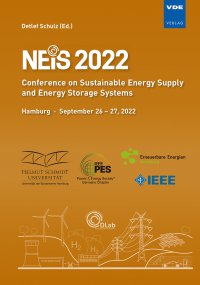Impact of grid forming inverters with different control strategies on the Inter-area Oscillations
Conference: NEIS 2022 - Conference on Sustainable Energy Supply and Energy Storage Systems
09/26/2022 - 09/27/2022 at Hamburg, Germany
Proceedings: NEIS 2022
Pages: 6Language: englishTyp: PDF
Authors:
Naghavi, Hamed; Paetzold, Jens (Institute of Energy Systems and Energy Management, Hochschule Ruhr West, Bottrop, Germany)
Abstract:
The integration of inverter-based Generation Units (GUs) namely type 2 GUs is posing new challenges in power system dynamics. One of the key challenges is to ensure sufficient damping of oscillation modes like inter-area oscillations. To date, Power System Stabilizers (PSS) are used to damp the electromechanical oscillation modes of power systems. As the number of type 1 GUs drops and the number of existing PSS in the power system decreases, the type 2 GUs have to contribute to damp the electromechanical oscillatory modes and minimize consequences of low frequency oscillations like inter-area oscillations. The purpose of this paper is to investigate the impact of grid forming (GFM) controlled type 2 GUs with different control strategies on inter-area oscillations. To perform required simulations, two common GFM control strategies are used, namely the Virtual Synchronous Machine (VSM) and the droop control. These models are implemented as templates in the DIgSILENT PowerFactory library. The Kundur two-area test system is used for modal analysis and transient simulations to investigate the impact of GFM controlled GUs on inter area oscillations. In addition, the impact of different type 2 GU placements on inter-area oscillation damping will also be studied. Simulation results reveal the suitable performance of the investigated method. The results demonstrate that compared with the state of art grid-following (GFL) controlled GUs, GFM controlled GUs can significantly improve the damping of inter-area oscillations. Particularly when the GFM controlled GU is positioned in the active power transmission region.


